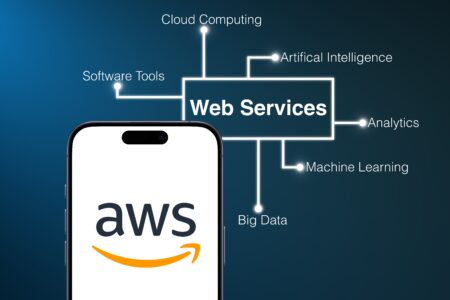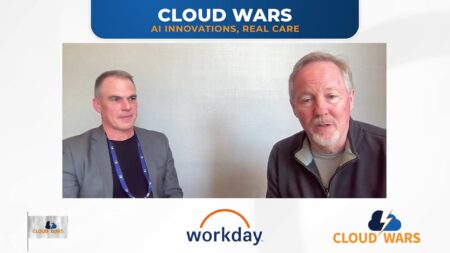For many, digital transformation is still a fuzzy concept that seems nebulous like the cloud was several years back. Many companies realize that the transformation is needed, but don’t know where to start. Enter Robotic Process Automation (RPA) into the mix. Gartner stated that RPA is “the fastest-growing segment of the global enterprise software market,”, and even predicts double-digit growth by 2024.
If RPA is part of your future business strategies please join us for the RPA Expo on May 20th at 11 am ET to hear from best-selling author, Ian Barkin, Cloud Wars Founder Bob Evans, NYU Stern School of Business Professor Rob Seams, and more. In the meantime, here are a few things to get you started:
What Exactly is Robotic Process Automation?
UiPath defines RPA as “a software technology that makes it easy to build, deploy, and manage software robots that emulate humans actions interacting with digital systems and software.” In other words, RPA can emulate tasks that people do across existing infrastructure and applications. At the core is a bot that runs based on input rules, triggers, and as part of a broader automation job.
Another great aspect of RPA is its ability to connect with legacy applications that have typically been isolated. This opens up the doors for these systems to connect with cloud ecosystems or other on-premise systems.
Ideally, RPA is a perfect solution for key business areas that have legacy applications with volumes of tasks and inputs. For example, Finance and HR departments are known for their use of these legacy systems and have many manual, redundant tasks and are great candidates for starting the RPA journey. Invoice and order entry can be streamlined and automated even from scanned or emailed documents that come through.
The primary point of RPA is to free up people from repetitive work and elevate their focus on more important things. People should be interacting with other people with creativity and ideas, not stuck in mindless data entry.
What Vendor Should I Go With?
To quote the 80’s cartoon G.I. Joe, “Knowing is half the battle”. You know that you need RPA to be a part of your tech landscape and strategy, the next step is to evaluate which vendor solution makes sense for your organization.
There are quite a few options to choose from such as UiPath, Automation Anywhere, Blue Prism, Nintex, and Microsoft’s Power Automate. Obviously, evaluating your options is a critical step, but a great way to understand how these tools operate is to involve citizen developers. These are those people that are tech-savvy, easily adopt new concepts, and create solutions for not only themselves but others.
Additionally, many of the RPA vendors offer low-code, no-code options that can greatly increase deployment speed.
How Do I Get Started?
Any automation effort should be viewed as a journey and not a one-and-done project. With this in mind, it’s best to start small with a pilot deployment. This tackles a few things right away: Realization of the quick wins; buy-in from various stakeholders; and identifiable, repeatable steps that can be documented.
An example of a pilot, quick win effort could be with your invoice intake process with a few key customers. Many times invoices are still mailed in, emailed, or even faxed. RPA can allow you to “read” the document and pull out important details such as total amounts, company names, and addresses. This data can then be fed into other systems to continue the automation cycle.
The result of a pilot is to showcase the outcomes to other people and teams. This will spark excitement and trust in the concept. As a next step, creating a core team, sometimes referred to as a Center of Excellence, defines the rules of the road and how you navigate the automation journey. This team will help your organization on track as the automation scales and becomes more complex.
What Failures Can Be Avoided?
With any automation effort, there are going to be challenges along the way. However, by having a clearly defined goal, many issues can be avoided.
One such critical area is the failure of buy-in. If your automation project does not have the buy-in from multiple levels in the organization, then this will set you up for failure. By creating the case for automation, presenting the outcomes, and keeping the right people informed, will increase the chances of success. This boils down to answering the “Why?” questions. Why are we implementing this automation? Why is my role valuable in this?
Another failure area to avoid is not having the right people showcasing the process. Now that you have identified the automation process, the right people need to be able to demonstrate the process from end to end. If the developers or decision-makers don’t understand all the steps, and the steps aren’t well documented, then things can fall apart quickly. This can lead to the next failure area of changing the process mid-stream.
If you have the process outline, and you have the buy-in, then changing the process partway through can cause a halt to the project altogether. Another element to this is if the automation processes are not monitored for small improvements. If these small improvements are put in place as your organization’s processes change, or as you scale, then an abrupt change mid-stream would be required. Which, as stated above, can lead to a halt altogether which can lead to huge impacts across the organization.
Is RPA a People Replacement?
RPA is far from a people replacement. If anything, it should be emphasized throughout your company as an enabler. Automation can augment what people do, and shift focus to high-quality work. By building this concept into your workforce’s core competencies, people will feel empowered in what they do and go beyond the mundane into something unique.
If you are looking to learn more about Robotic Process Automation, then join us on May 20th at 11am ET for our free RPA Expo digital event. This three-hour event will feature short-form, to-the-point discussions to set the standard in delivering an accelerated master class on the application of RPA to drive business, process, and customer value.






